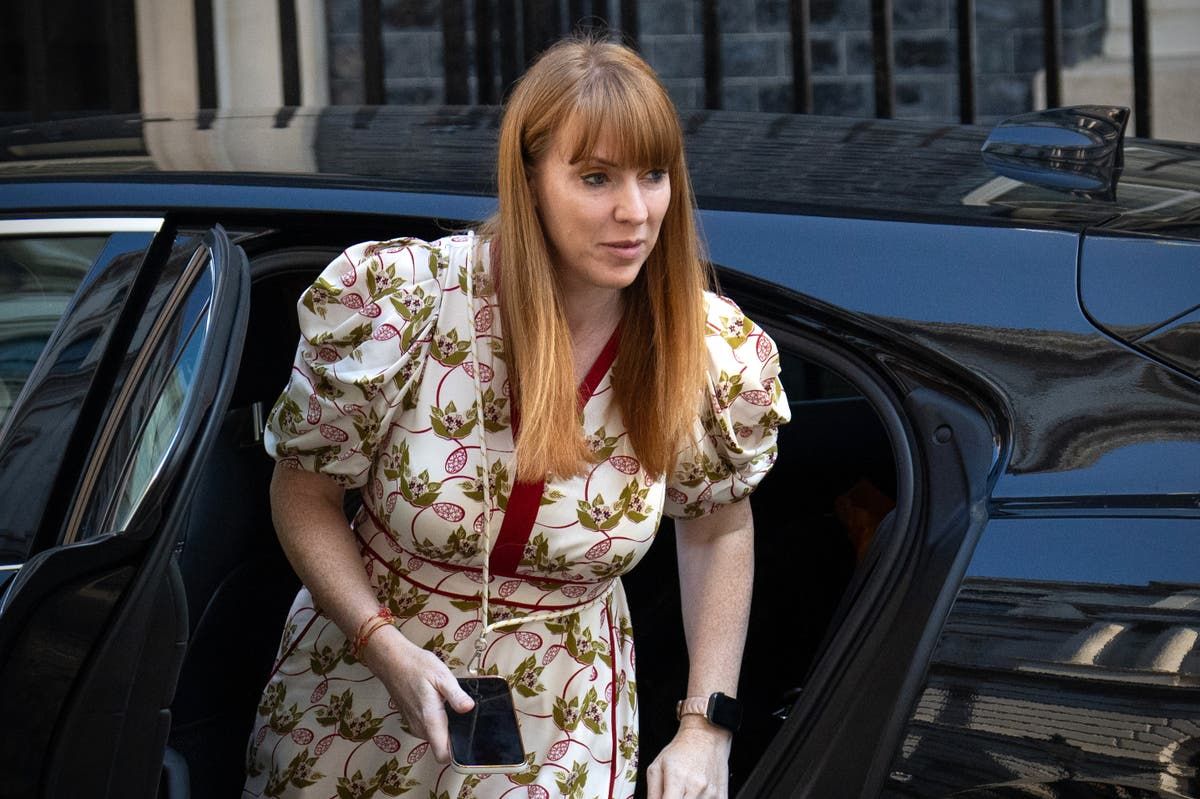Truly support
independent journalism
Our mission is to provide unbiased, fact-based reporting that holds the powerful to account and exposes the truth.
Whether it's $5 or $50, every contribution counts.
Support us in offering journalism without agenda.
IWhen my friend came over to my house for dinner last week, she looked pretty normal. Except for one thing: A multi-colored string with her phone attached to it was hanging from her torso. I looked closer. Was it an excessively long cord? A handbag as thin as spaghetti? No. Apparently, it's a phone strap.
It turns out the concept is pretty simple. Imagine an elongated necklace that can be worn like a crossbody bag, but that only carries your device. The gadget is all the rage right now: American models Gigi Hadid and Kendall Jenner often sport beaded lanyards attached to their phones. And the accessory has even made it to the top: Deputy Prime Minister Angela Rayner sported one (albeit in a more professional, simpler version) at a meeting at 10 Downing Street last month.
In practical terms, the phone strap might make perfect sense, as the average person in the UK is glued to their phone for over three and a half hours a day, so why not make it a permanent fixture in your outfit? But in reality, the trend hasn't been inspired by our attachment to our devices at all. It's just a way to distract women from noticing the lack of pockets in our clothes.
Women's clothing has rarely been designed for practical purposes. It's something that has bothered me for most of my life. That's why I jump for joy when I find a dress or skirt with built-in pockets (or get jealous when I see a carefree man strolling around without a bag). In reality, most of my clothes don't have pockets. Sometimes, at first glance, a garment I'm looking at may appear to have a pocket, but it's just a “fake pocket” and totally useless. And as for my jeans, their pockets are only big enough to hold a pack of Wrigley's Extra. Even as I write this, my outfit has one working pocket and it can't even hold my phone. In comparison, there is no poverty of pockets in men's clothing. Luxurious fabric pockets are delicately sewn into the inside and outside of suit jackets. And when it comes to pants pockets, they're much deeper than women's.
If I may delve a little into fashion history, it’s pretty clear that pockets are political. The history of their evolution in womenswear (or lack thereof) is defined by sexism and economic inequality, as women were traditionally expected to dress for beauty rather than utility.

But of course, women still had to carry things, even in the 17th century. Back then, women carried secret, removable pouches beneath their petticoats. Some women used them to store or conceal sentimental items like letters, miniature portraits or other mementos of loved ones, according to the V&A. While its archives have little evidence of what women kept in these pouches, police records of pickpockets show that women carried utilitarian items like small knives, gloves or sewing items like thimbles with them.
By the 20th century, when dresses became tighter fitting, pouch pockets had completely fallen out of fashion. The New York Times Last year, Hannah Carlson, a professor of fashion history and author of Pockets: An intimate story about how we keep things closeCarlson explained that many dressmakers did not want to sew pockets into women’s clothing because they interfered with the silhouette of the garment, especially if the pockets were full. “Activist Elizabeth Cady Stanton had to beg her dressmaker to include a pocket in her dress,” Carlson said. “Her dressmaker responded that pockets would ‘make you stand out terribly!’” The story was different in menswear. Pockets became standard when the suit was industrialized in the 1850s. Carlson explained that pockets were simply “a part of doing business in menswear.”
If you go back to the ultra-modern phone strap, it's easy to see why they're so popular with women. The accessories industry has long benefited from women's lack of pockets: many fashion historians attribute the rise of the handbag in the 1950s to women's newfound independence in the post-war years and the fact that, well, women had more stuff to carry around.
The phone strap is another accessory that takes advantage of women's lack of pockets. It also makes sense in our current age, as everything we could ever need is now digitised on our phones. It seems designer brands are cashing in on this too, charging a pretty penny for what is essentially a lanyard. Prada sells a phone case with a metal chain for £810, Miu Miu sells a leather one for £480 and at Hermes: £1,280.

But, whatever the price, I secretly can't stand them. While the phone strap helps you carry your essentials, it also tends to ruin your outfit. I tried my friend's multi-colored strap: it didn't flatter me at all, as it sat right in the middle of my chest. And, I might add, it's particularly irritating to have your phone repeatedly hit your butt when you're walking at a semi-fast pace. I long for the day when I can leave the house without any bag at all, and instead wear an outfit with pockets capable of holding my phone, keys, and cardholder. But that's wishful thinking.
Meanwhile, my friend tells me that she bought a phone strap that she physically attaches to her phone while walking and using it. Phone theft has been on the rise in her area – according to the Metropolitan Police, a phone is stolen in London every six minutes. Instead of pockets, a phone strap could act as another layer of protection and a potential deterrent to thieves who cycle through the city – and ironically, women are more likely to be victims of phone theft than men, according to government statistics.
However, I'm not convinced that a strap would actually help. To put it to the test, my friend and I decided, after a few glasses of wine, to simulate a mugging in my living room, to see if the accessory could withstand even the strongest of tugs. I put it on, playing the victim in this little amateur drama; my gym-going friend is the thief. When she yanks my phone, the rope is so strong that it pulls me to the ground with it. Suddenly, I'm on the ground. Surely, by now, the thief would have laughed at me and walked away.
But you know what could have helped me a lot in this situation? Clothes with actual pockets. Do you hear me, fashion gods?












